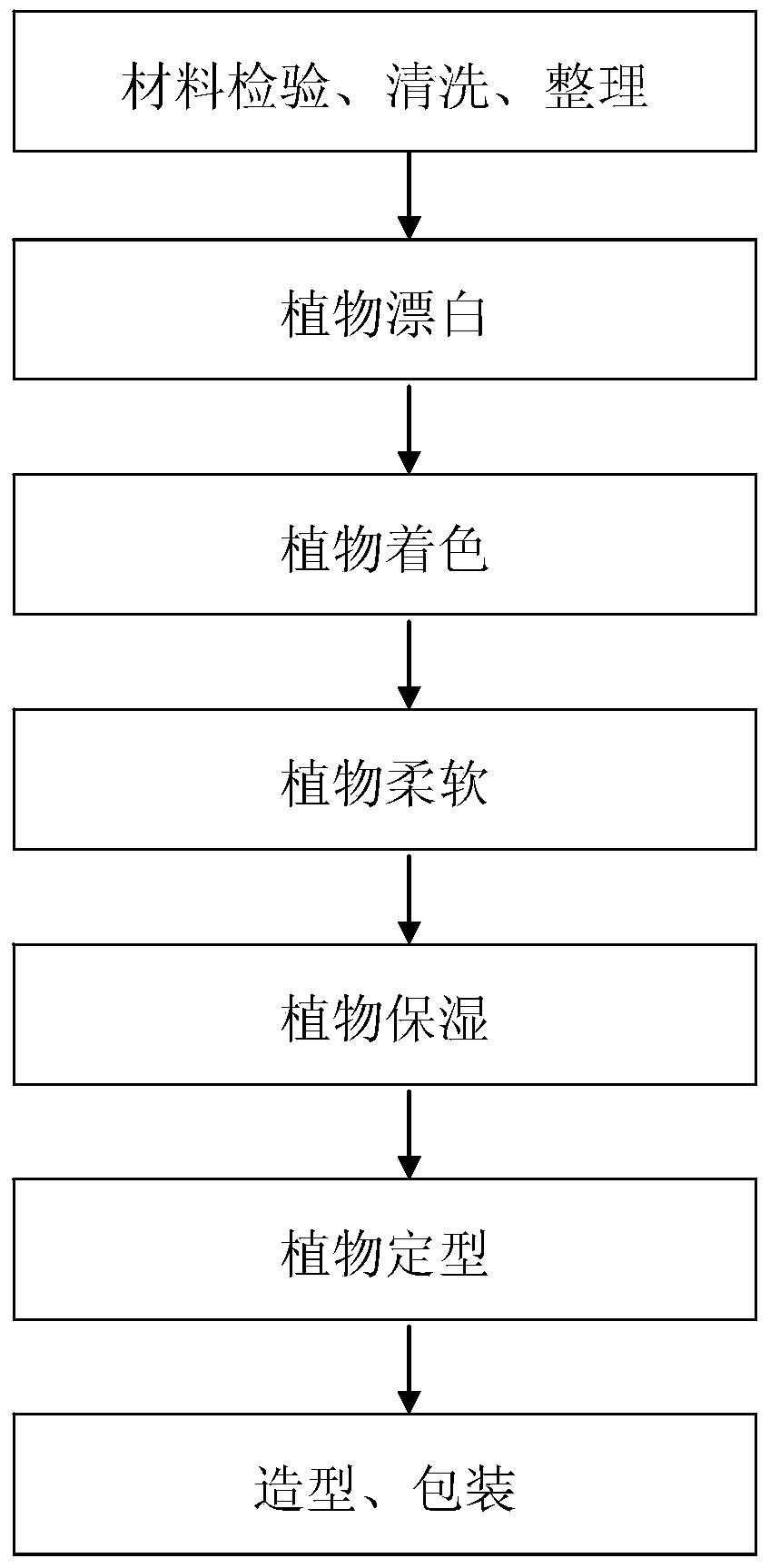Method for restoring fresh flowers from hydrangea dried flowers and hydrangea prepared by using same
A technology for hydrangea and dried flowers, applied in the field of biological plants, can solve the problems of lack of biological activity and texture, dull withering and other problems
- Summary
- Abstract
- Description
- Claims
- Application Information
AI Technical Summary
Problems solved by technology
Method used
Image
Examples
Embodiment 1
[0014] 1) Inspection, cleaning and arrangement of dried hydrangea flowers:
[0015] 2) Bleaching treatment: put the dried hydrangea into the bleaching liquid, soak at room temperature for 6 hours in a closed state, the bleaching liquid contains 20 parts by weight of sodium hypochlorite, 5 parts by weight of calcium hypochlorite, 3 parts by weight of weak acid (the degree of ionization is less than 33%), 1 weight part of sodium carbonate, 3 weight parts of phosphate, wherein phosphate is selected sodium orthophosphate, 3 weight parts of unsaturated fatty acid, 2 weight parts of triethyl phosphoric acid.
[0016] 3) Coloring treatment: put the bleached hydrangea into a water bath device containing a colorant solution, set the temperature to 55° C., and soak for 24 hours. The colorant contains 0.5 parts by weight of food coloring, 1 part by weight The edible salt of 0.1 part by weight, the weak acid (its degree of ionization is less than 33%) of 0.1 part by weight.
[0017] 4) S...
Embodiment 2
[0020] 1) Inspection, cleaning and arrangement of dried hydrangea flowers:
[0021] 2) Bleaching treatment: put the dried hydrangea into the bleaching liquid, soak at room temperature for 12 hours in a closed state, the bleaching liquid contains 5 parts by weight of sodium hypochlorite, 0.1 parts by weight of calcium hypochlorite, 0.01 parts by weight of weak acid (the degree of ionization is less than 33%), 1 weight part of sodium carbonate, 0.1 weight part of phosphate, wherein phosphate is selected sodium orthophosphate, 0.1 weight part of unsaturated fatty acid, 0.1 weight part of triethyl phosphoric acid.
[0022] 3) Coloring treatment: put the bleached hydrangea into a water bath device containing a coloring agent solution, set the temperature to 22° C., and soak for 36 hours. The coloring agent includes 1 part by weight of food coloring, 3 parts by weight Part of edible salt, 0.5 parts by weight of weak acid (its degree of ionization is less than 33%).
[0023] 4) Soft...
Embodiment 3
[0026] 1) Inspection, cleaning and arrangement of dried hydrangea flowers:
[0027] 2) Bleaching treatment: put the dried hydrangea into the bleaching liquid, soak at room temperature in a closed state for 8 hours, the bleaching liquid contains 14 parts by weight of sodium hypochlorite, 3 parts by weight of calcium hypochlorite, 1 part by weight of weak acid (the The degree of ionization is less than 33%), 3 parts by weight of sodium carbonate, 5 parts by weight of phosphate, wherein the phosphate is selected from sodium orthophosphate, 2 parts by weight of unsaturated fatty acid, and triethyl phosphoric acid of 1 part by weight.
[0028] 3) Coloring treatment: put the bleached hydrangea into a water bath device containing a colorant solution, set the temperature to 40° C., and soak for 30 hours. The colorant contains 0.8 parts by weight of food coloring, 2 parts by weight Part of edible salt, 0.3 parts by weight of weak acid (its degree of ionization is less than 33%).
[00...
PUM
 Login to View More
Login to View More Abstract
Description
Claims
Application Information
 Login to View More
Login to View More - R&D
- Intellectual Property
- Life Sciences
- Materials
- Tech Scout
- Unparalleled Data Quality
- Higher Quality Content
- 60% Fewer Hallucinations
Browse by: Latest US Patents, China's latest patents, Technical Efficacy Thesaurus, Application Domain, Technology Topic, Popular Technical Reports.
© 2025 PatSnap. All rights reserved.Legal|Privacy policy|Modern Slavery Act Transparency Statement|Sitemap|About US| Contact US: help@patsnap.com

